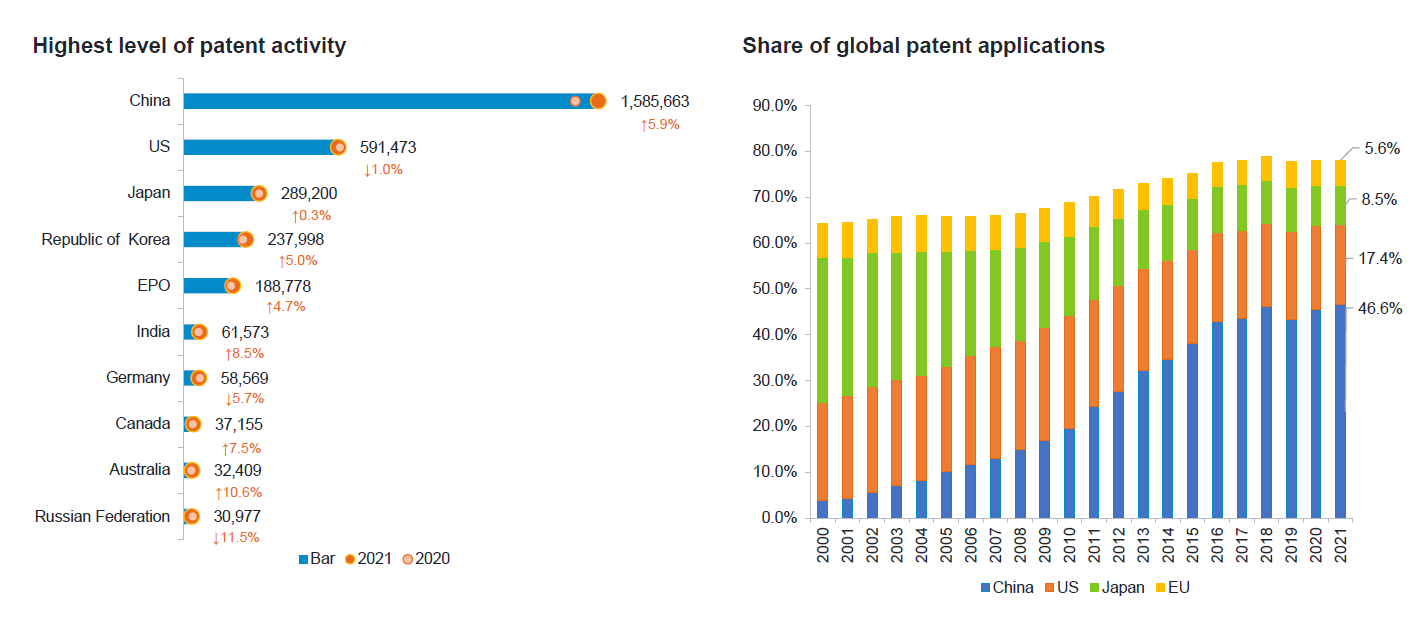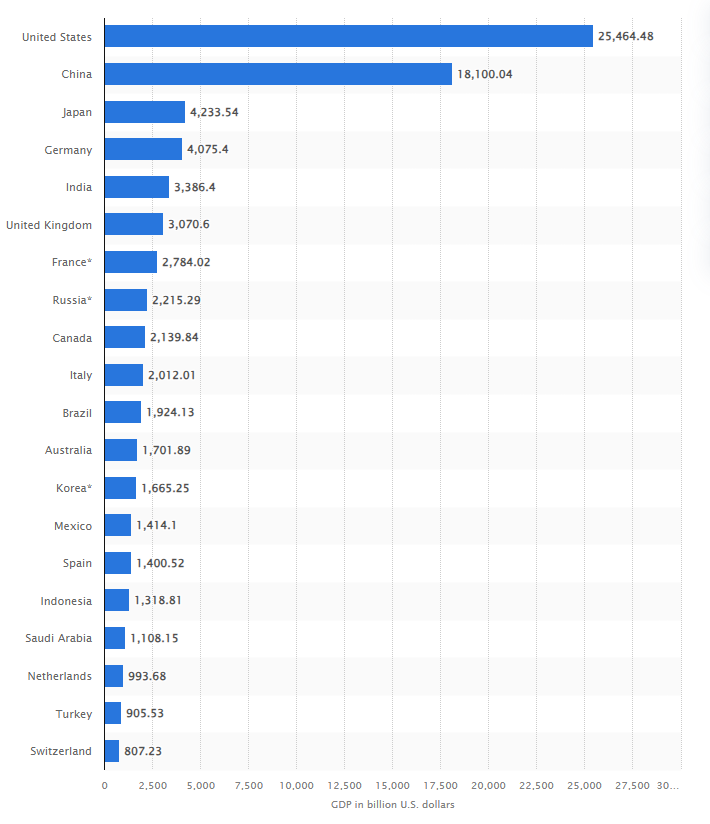China could overtake the US as the globe’s innovation hub if patent trends are anything to go by. The nation accounted for almost half (46.6%) of new patent applications in the most recent data from 2021, with the US trailing at 17.4%.
The Asian powerhouse was a small player at the turn of the century, but the volume of new inventions coming from China has steadily grown.
This is a trend that some managers, including Fidelity China Special Situations’ Dale Nicholls, expect to continue as China consolidates its position as a global innovation leader in fields such as electric vehicles (EVs).

Source: Fidelity
“China is creating more than half of the world’s EVs and its ownership of the supply chain is even higher, so I think it is just getting stronger,” he said. “China is leveraging the huge volumes it has and frankly I don't see how any other country is going to be able to compete with it in that space.”
It’s not just EVs where China is leading, but other renewable sectors as well, according to Baillie Gifford China Growth manager Sophie Earnshaw.
China makes more than 70% of the world solar cells and contributes roughly two thirds of new global wind power infrastructure.
Around 70% of its oil and 45% of its gas are imported from abroad and the increasing importance of domestic production given geopolitical risk has created “massive incentives” for China to up investment into these areas, according to Earnshaw.
However, she pointed out that just because China is launching upwards of 1.5m patents a year, this doesn’t mean all of those fresh inventions are successful.
Earnshaw highlighted the inefficient Covid vaccines launched in China versus the rest of the world. The two main vaccines used in the UK – Pfizer/BioNTech and AstraZeneca – were 95% and 94% effective in preventing severe disease, whereas China’s CoronaVac and Sinopharm were only 50% and 73% effective, according to the Institute for Health Metrics and Evaluation.
“There are always instances where innovation fails and China's failure to produce a globally competitive Covid vaccine is just one of those examples,” Earnshaw added.
Despite these setbacks, she said that the healthcare sector in China is one of main areas where she is seeing signs of “significant innovation”.
Indeed, Guinness Best of Asia manager Sharukh Malik said that, although the EV market is the predominant area that investors think of when looking at Chinese innovation, there is a long runway for the healthcare sector to become more of a global player.
“We expect more innovation from the Chinese in a greater number of fields,” he said. “We expect Chinese companies to start developing more of their own pharmaceutical products rather than make generic versions of existing drugs.
“This is all backed by an education system training more graduates in both the theoretical and vocational subjects.”
Virginie Maisonneuve, global chief investment officer of equities at Allianz, forecast that China’s gross domestic product (GDP) growth will slow to levels more in line with other developing markets after a decade of sizable gains, but that shouldn’t slow innovation.
China’s total GDP is worth $18.1trn, which is 28.9% smaller than the US, according to data from Statista. It has some way to go before overtaking the US, but China still account for almost a fifth (19.1%) of total global GDP.
Countries with the highest GDP in 2022

Source: Statista
Now that China is reaching a more mature stage, Maisonneuve agreed that the high volumes of innovation will be less concentrated and spread out across a wider set of sectors.
“We believe the focus will move to those areas where China is beginning to show it can lead in terms of innovation and developing globally market-leading products,” she said.
“It is these industries that are, in our view, China’s future, and its government and regulators are moving to support this new direction for the domestic economy.”
Maisonneuve highlighted the China Standards 2035 Strategy, which is a policy introduced by the Chinese government that aims to create a set of standards for new industries. It is hoped that these will act as a new global standard for tech companies worldwide, which could boost innovation substantially further.
“The goal of this project is for China to play a central role in setting global technical standards for the next generation of tech,” Maisonneuve said.
“These developments are indicative of the country’s current ambition to move beyond a source of cheap manufacturing to setting the agenda and leading innovation across several areas that will be vital to global growth and prosperity in the coming decades.”





